Restored 1960 Škoda Octavia testifies to Cold War culture clash
Škoda may be a global automotive powerhouse, but aside from fans of the World Rally Championship and a few particularly curious car nerds, the storied Czech brand is almost entirely unknown in the United States.
Surprisingly, this was not always the case. From roughly 1957 to 1967, Americans could actually buy Škodas new; a string of importers were looking to cash in on the import car boom. Thanks to Cold War tensions, very few of them did. This 1960 Octavia, laid up in a Seattle garage for 52 years, is an ultra-rare survivor.
How rare? Exact figures are unknown, but the entire American Škoda misadventure probably amounted to fewer than 2500 cars in all.
Imports began with New York City’s Continental Car Combine, which briefly sold Peugeots and imported Goggomobil microcars. Later, L.A.’s flamboyant Willy Witkin—which also imported Wartburgs—got in on the action. After peaking in the two years before the Berlin Crisis of 1961, interest in Škodas dried up. But small-scale NYC importers lingered until 1967, sometimes selling cars out of a Brooklyn garage in Greenpoint.
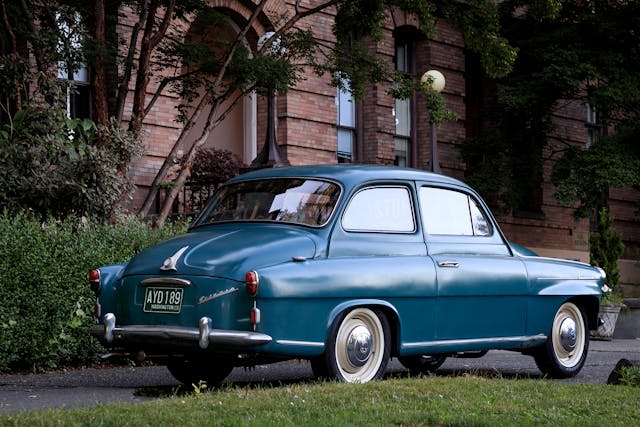
Selling “Communist” cars to Americans in the Khrushchev era was inherently an uphill battle, but Continental and Witkin had every reason to think that Škodas might take off from Sacramento to Schenectady. The phenomenal rise of MG, Renault, and especially Volkswagen spawned a veritable United Nations of import attempts, and Toyota’s first U.S. models were sold around the same time as Škoda’s.
In later years, Eastern Bloc cars stagnated along with the planned economies that created them. But Czechoslovakia’s major automakers, Škoda and Tatra, were world-class prior to WWII and continued to build designs on par with Western cars into the 1960s. The Octavia and its predecessor, the 440, were very much a match for cars like the VW Beetle, Fiat 1100, or Saab 96.
Socialist Škodas
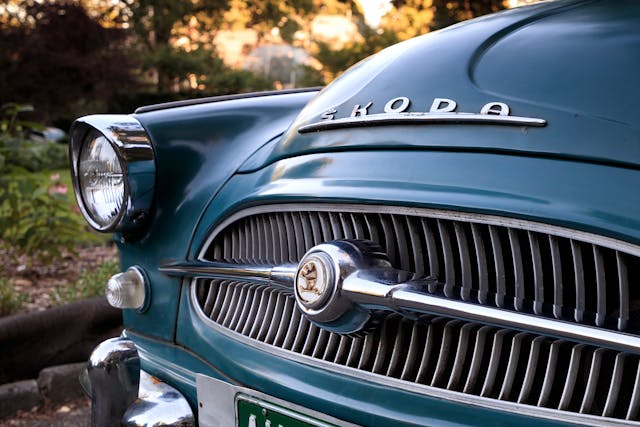
The Octavia was the last project of the great Czech designer, Vladimír Matouš, who retired just after its introduction in 1959. Matouš was from Mladá Boleslav, 30 miles outside of Prague, where he graduated from the Czech Technical University. He’d been with the automaker since it was named Laurin & Klement, before acquisition by the Pilsen-based Škoda conglomerate in 1925.
Before the Depression, Škoda built luxury cars. But hard times dictated smaller products and innovation, and Matouš was the right person for the job. He ascended to the role of chief engineer in 1928, and in the 1930s he oversaw the creation of a string of attractive, well-performing, mass-produced cars starting with the 420 (later known as the Popular).
The 420 had a Lotus-like backbone chassis, streamlined styling and, eventually, alloy-block OHV engines. From there, Škoda built larger and more powerful models like the Rapid and Superb.
The line continued even after the Nazi annexation of Czechoslovakia, but eventually the factory was forced to build German armaments, and the Allies heavily bombed it. When the smoke cleared, Czechoslovakia found itself firmly in the Soviet sphere of influence. The works were rebuilt and prewar designs put back into production, but the company became property of the state.

For the first few years, interference was minimal and the state, somewhat helpfully, blocked the revival of a few competitors. In late 1952 or early 1953, however, officials ordered Škoda to design a mass-market car that would be smaller, cheaper, and more viable for export than its big, slow 1200.
Matouš’ engineers and body designer Josef Velebný worked fast. The prototype was ready by December of 1953 and the car in production by the fall of ‘54.
Originally dubbed the Spartak series, the new model was officially named 440, 445, or 450—depending on horsepower. The “Spartak” name, however, was binned to avoid confusion with Dutch motorcycle maker Sparta.
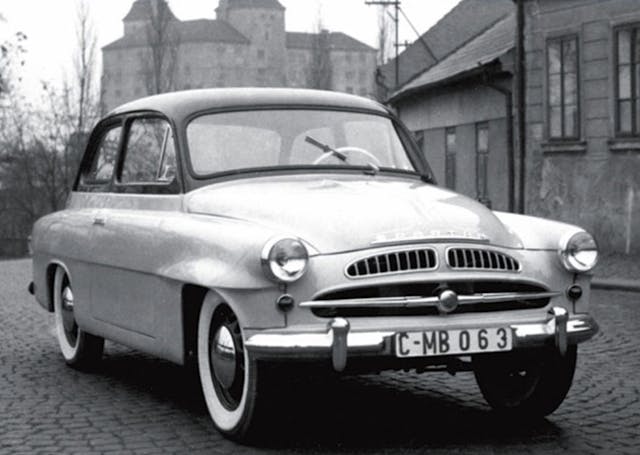
Almost exactly the same size as a Beetle, the 440 came only as a two-door sedan at first, but wagon and convertible bodies joined the lineup later. Power came from aluminum-alloy OHV fours descended from the old Popular, 1089-cc and 40 hp in the 440 or 1221-cc and 44 hp in the 445. In 1958, a twin-carb 1089 debuted as the 50-hp convertible 450. All used column-change four-speeds.
Built for the rougher roads of Eastern Europe, the 440 retained a separate backbone chassis and 8 inches of ground clearance. There were early quality ills, but it was a solid machine overall and soon became Škoda’s best-ever seller. Most cars were exported to Western Europe.
In January of 1959, the company facelifted the 440/445, giving birth to the Octavia. (The 450 Convertible became the Felicia.) Its visuals were lightly updated, with a more restrained grille and tiny tailfins, and the car got telescopic shocks and coil springs up front to supplant the outgoing transverse leaf springs. The wagon-body Octavia Kombi was also added, but the basic package was the same.
Škoda gets the cold shoulder
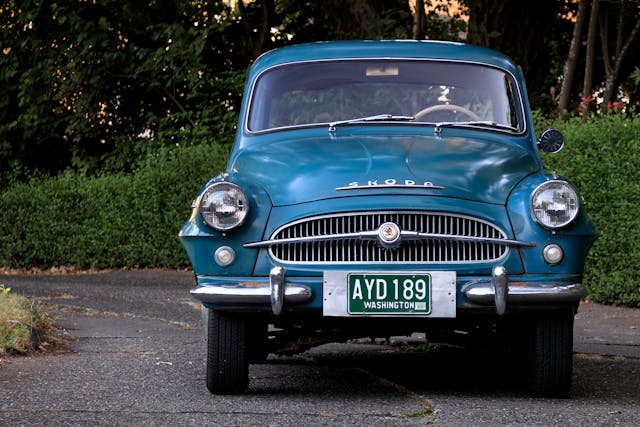
The 440 was the first Eastern Bloc car sold in the U.S. and its importer, Continental, started slowly, bringing in only a few cars in 1957–58 while signing up dealers. Czechoslovakia’s vehicle export agency, Motokov, was delighted to sell cars in America and expanded the brand’s reach by signing up Witkin to serve as West Coast importer in 1958.
Already a seller of Fiats and Simcas, Witkin was always on the hunt for potentially popular imports. Not long after taking on Škoda, Witkin added the East German Wartburg after that company’s original New York-based importer’s financing fell through.
The 440, Octavia, and Felicia earned considerable critical praise when the time they arrived in America in the late 1950s. None other than Popular Science praised the cars for their precise gearboxes, 30-mpg fuel economy, and excellent handling.
Škoda’s American brochures were cooked up in Czechoslovakia but depicted distinctly American-looking scenes. They were full of the kind of 1950s optimism portrayed later by Happy Days: smiling children and families playing by lakes and pools with their Octavias parked nearby. Škoda really wanted to fit in.

Not everyone was so optimistic. Witkin and the other various importers got generally positive feedback on the cars themselves, but they also regularly received anticommunist hatemail and threats for selling them at all. Continental did not succeed in establishing a big network, but Witkin managed to recruit dealers in eight western states, including Washington.
In May of 1959, Eisenhower and Khruschev met for a summit at Camp David that seemed to cool many of the tensions of the post-Stalin era. That year, import sales in the U.S. rose by almost 60 percent, but neither of these events seemed allay the public’s resistance to buying a “communist car.” After the U-2 Spyplane crisis in 1960 and the rise of the Berlin wall a year later, all hope was effectively smashed.
Witkin and Continental were out of the picture by 1963. The sales network shrank down to, essentially, New York City. Small-scale sales continued until the launch of the rear-engine 1000MB, but Škoda was gone by 1967. The company would not return to North America until the 1980s, when it took a stab at selling in Canada.
52 years later


In 1960, the blue Octavia pictured here listed for $1878, including whitewall tires ($17), a heater/defroster ($25), and a $25 destination charge. Despite this, original owner Ron Stewart bought it from one of Witkin’s dealers, on Lake City Way in Seattle, for $999 in early 1961. The deep discount ($600 less than a new Beetle in 1961) reflected the car’s unpopularity. Stewart nevertheless got lots of joy out of the little Škoda in his first five years of ownership.
“When I’m meeting new people, I always ask them what their favorite car was as an ice breaker,” says current owner Rich Reinhardt, who met Ron and his wife Kathy at church in the mid-2000s. “Ron said, ‘A Škoda,” and I responded, ‘a what?’ So he gave me the whole story.’”

Stewart used the car for five years ferrying kids to scout camp near Snoqualamie Pass and commuting around Puget Sound, which essentially mimicked the lifestyle celebrated in Škoda’s brochures. By 1966 the car had 48,000 miles on the dial but an electrical problem took it off the road.
With no dealers, no parts supply, and no mechanics around with any experience working on Škodas, Stewart parked the car rather than junking it. One day it could be revived, he figured. After five decades of slumber, it remained asleep.
After Stewart unexpectedly passed away in 2018, his widow offered the long-disused car to its current owner, Reinhardt, who promised to rehabilitate it and return it to the family when done. “It was Ron’s stories about the car that drew me in. I think cars have cool stories and that’s what I like to look for,” Reinhardt says.
Reinhardt then spent six months concentrating on getting the Škoda mobile. “The rockers and the lifters were frozen solid, the clutch and brakes had to be entirely redone, [so] it was a big mechanical challenge.” Plus, parts for an Octavia aren’t necessarily easy to come by, even in the Czech Republic. In some cases substitutions were required. “My brake specialist found that a Ford F-100 master cylinder has the same bore as the Škoda’s, so we used that fitting.”
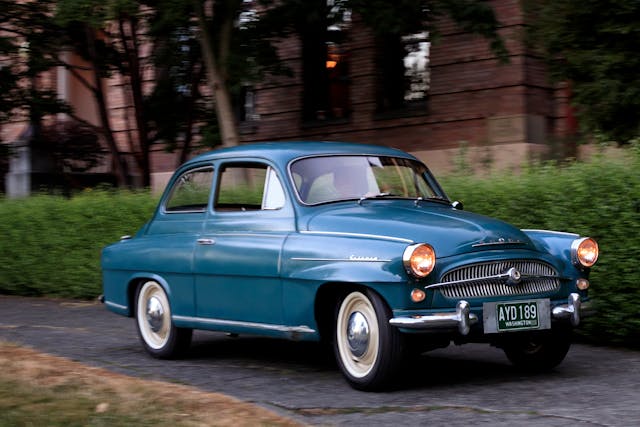
The car was mobile again by mid-2018, and once the dust and dirt were cleaned up, Reinhardt left the exterior exactly as it was in 1966. It quickly became an attention-getter. “Nobody knows what it is and people always want to come up and talk about it. At my first show with it I parked next to a gorgeous Riviera and the Buick’s owner groused that the Škoda got much more attention!”
“The family don’t want it so it’s become mine, but when I finally got it going I gave Ron’s daughter and her children a ride in it,” Reinhardt says. After having grown up with it in the garage and hearing their dad’s stories about it, actually getting to ride in the Škoda proved emotional. Even though he was now gone, it was a chance to experience what their dad had loved about the car. “There were tears.”
Škoda endures today under the Volkswagen Group umbrella and operates globally, excluding North America and Japan. Its few but ardent fans here in the U.S. can only imagine what the Czech brand would look like today if it had been granted a warmer welcome.

Check out the Hagerty Media homepage so you don’t miss a single story, or better yet, bookmark us.
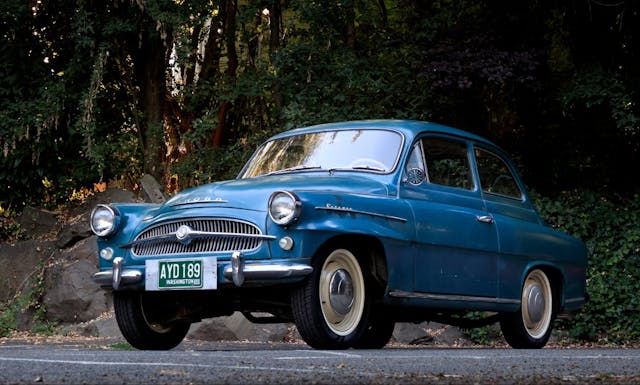
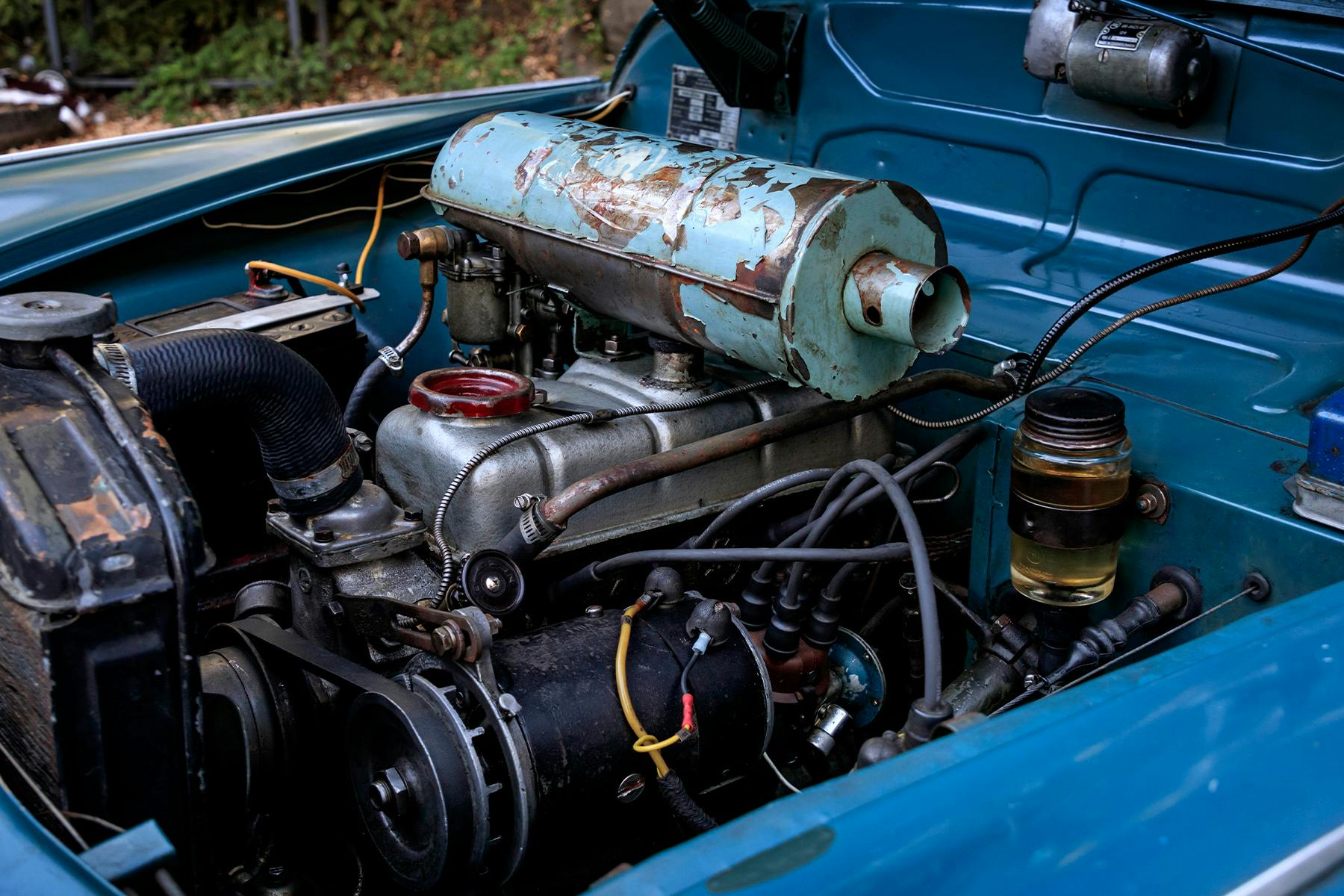
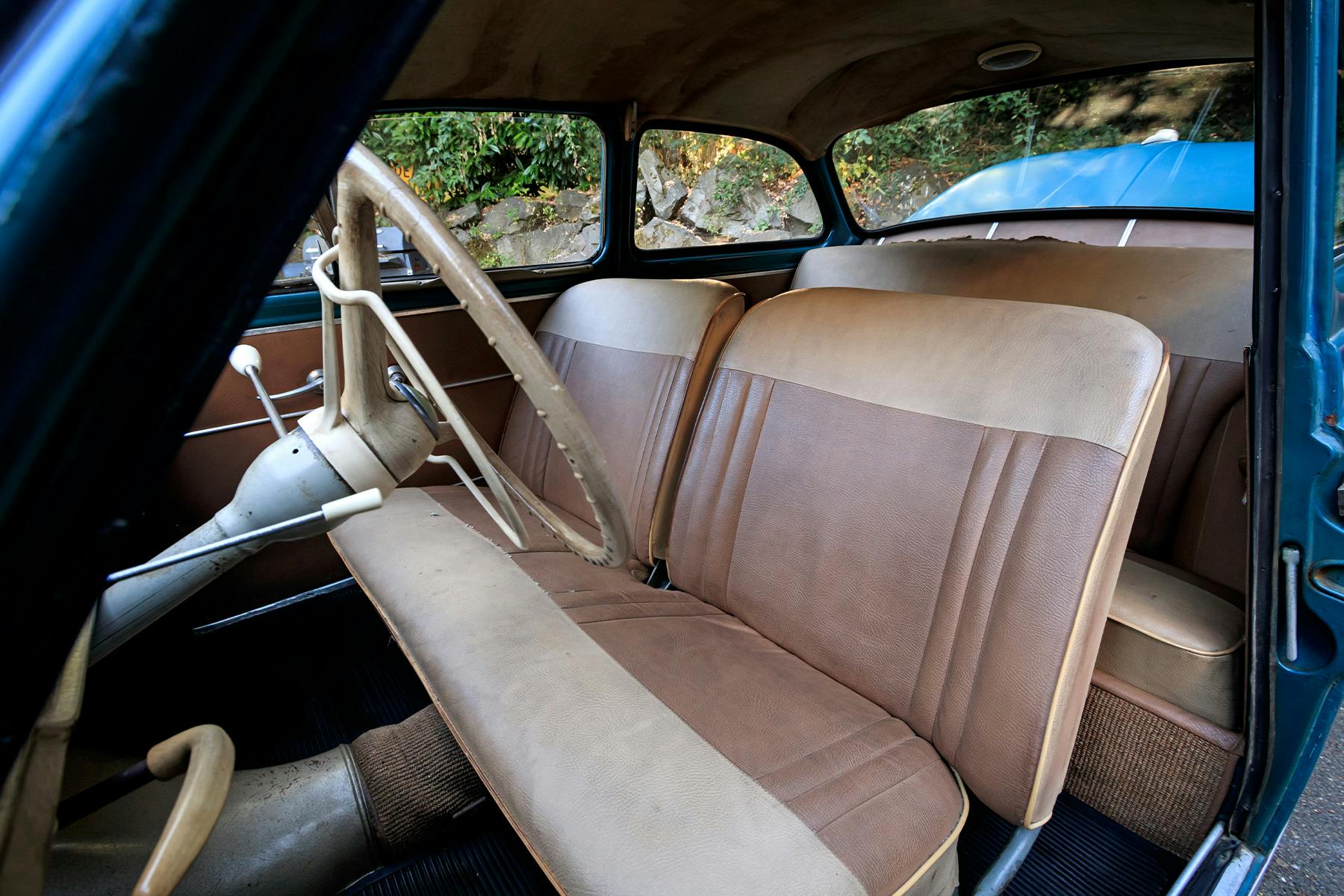

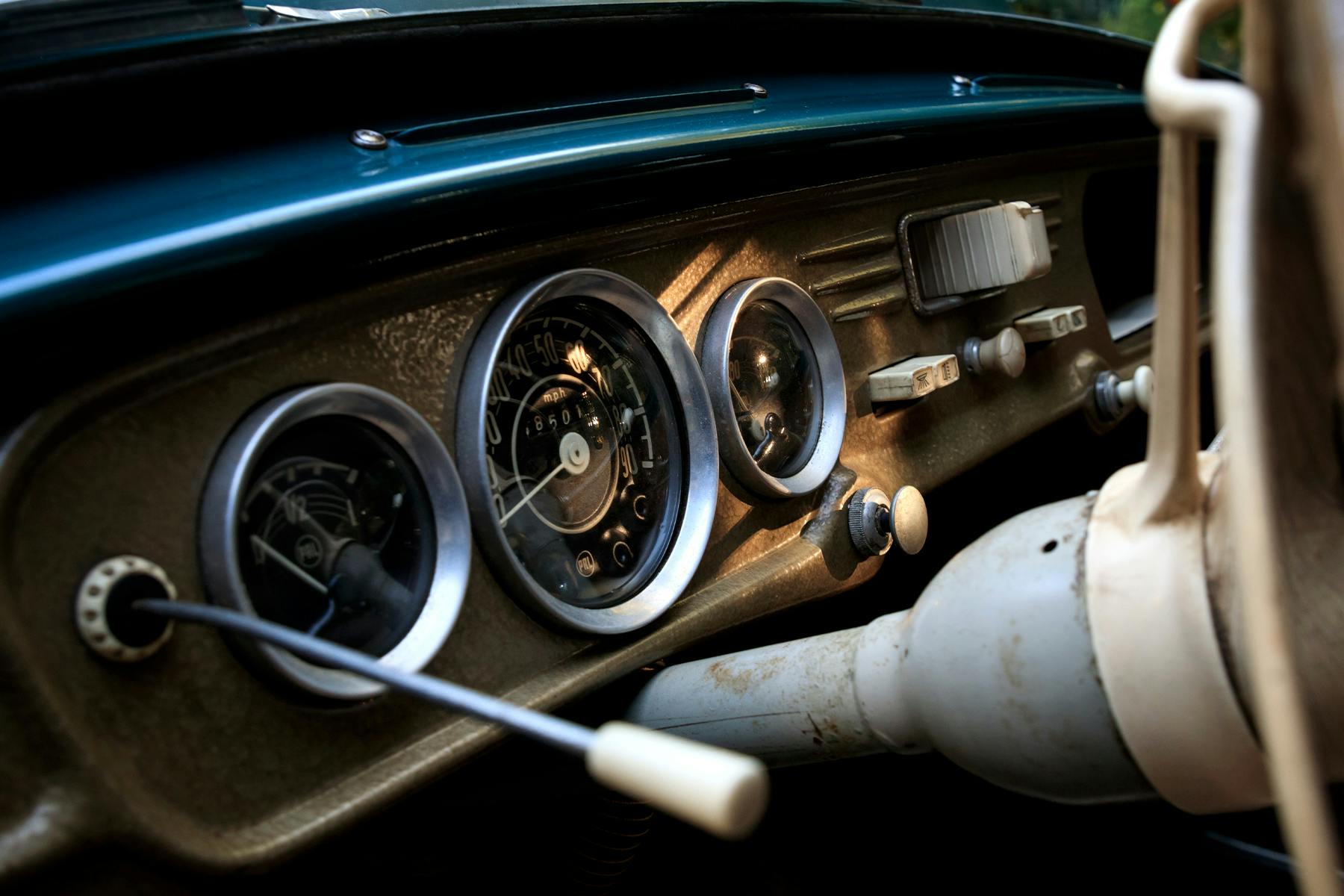


When I was in junior high school, ca 1959, the shop teacher had a Skoda that i never saw run. It was parked outside the shop for years. He replaced it with a Studebaker Scotsman, which he got a good deal on as a leftover, end of year car.
The small town where i grew up had a dealer, Kingsboro Motors, who deallt in every weird imported car. Citroen, Peugeot, Renault, Saab, Goggomobile, Borgwarg, Wolsely, Humber, Austin, and lots of others. I had the sales brochures for years. He eventually got a Studebaker franchise just in time to go broke woth them.
The Skoda was immortalized in this musical number from the 1967 Czech film “Woman Along the Rails”:
https://www.youtube.com/watch?v=O8y0Ws4RNg8
I remember this from when it was discovered. It’s great to see it spiffed up with period correct license plates! It would be great if it was featured in Hemmings Classic Car magazine. What exactly was the electrical problem? Any chance of displaying this at the Portland swap meet?
It’s a pretty plain car for the decade so I can see why it was not a huge seller. I assume price would have been the main driver for sales because exciting body lines were not the reason.
In the opening scene of Hitchcock’s North by Northwest set in NYC, a Skoda can be seen following Cary Grant’s taxicab.
I found an even earlier Skoda once in a wrecking yard on the Olympic Peninsula from either late 1930s or early 1940s. Was to far rusted to be of any interest.
In ’65 my first car was a ’61 Octavia. Sadly it was totaled out in a rollover accident. I’ve looked several times to find another but with no luck. Would like to know if one came up for sale. I’d gladly move my ’60 Volvo out to get a Skoda.